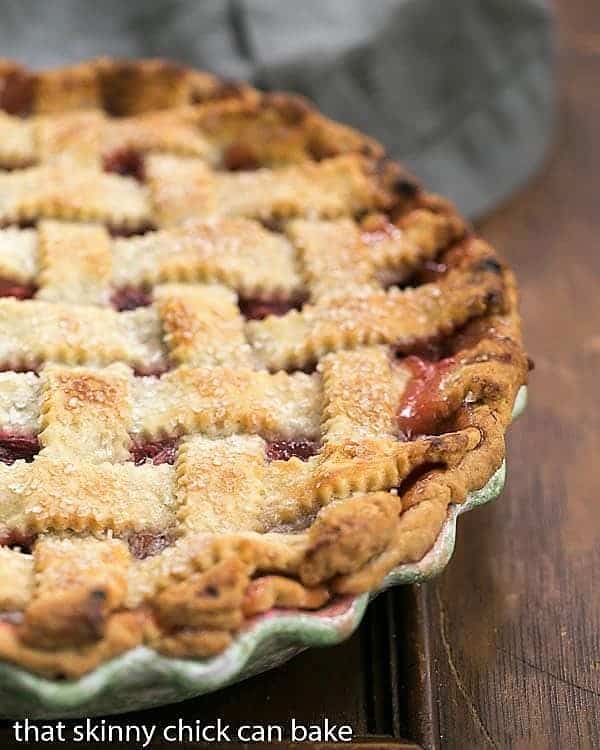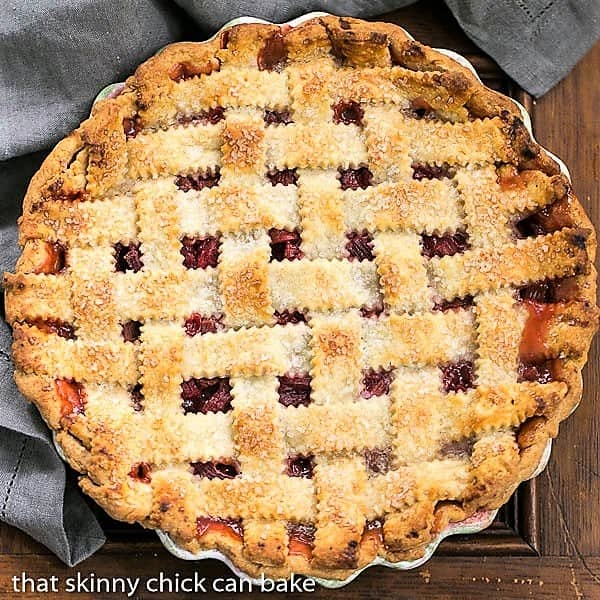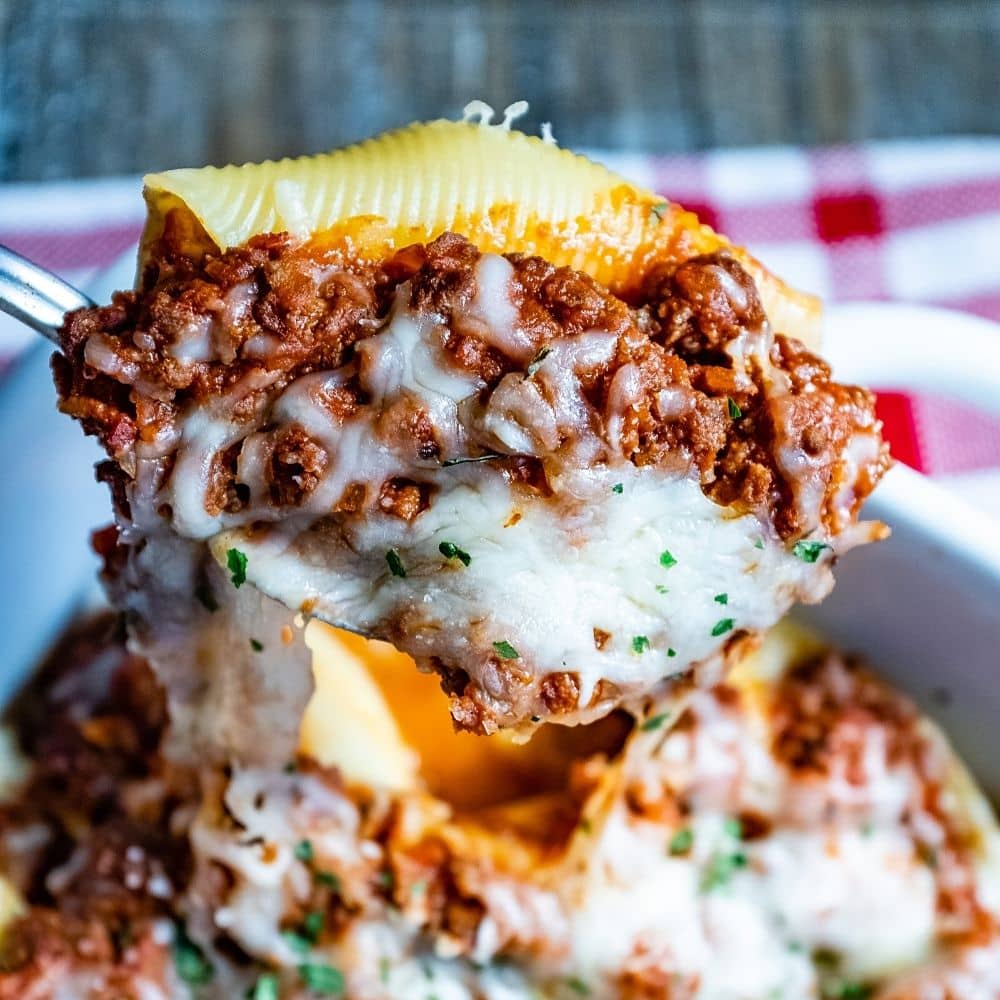Classic Rhubarb Pie with a Lattice Crust
This Classic Rhubarb Pie with a Lattice Crust is a spectacular taste of summer that’s been enjoyed for generations! With a double crust and no custard, it’s simply delicious!
Every bite of this homemade Rhubarb Pie Recipe brings back fond memories of my childhood. Growing up, we were fortunate to have a big rhubarb patch in our backyard, and nothing thrilled us more than when my mom surprised us with a freshly baked pie. The simple filling really highlights the natural flavors of this fabulous spring vegetable!

Why You Must Make This Pie
- If you’re lucky enough to have access to fresh rhubarb, this recipe is a perfect way to showcase this tart vegetable that’s often treated like a fruit.
- It truly embodies the taste of summer!
- There’s nothing quite like the delightful balance of sweet and tart found in a rhubarb pie!
Reader Endorsement
From Patti: “It came out perfect! It was hard to wait for it to set but necessary. I used the tip on egg washing the bottom crust and loved how it came out! This recipe is a keeper.”
More Rhubarb Inspiration
One of my favorite memories was when my mom would bake a classic rhubarb pie, flavored simply with sugar and a touch of butter. It was pure rhubarb ecstasy! No custard to muddy up the glorious taste of this delicious spring vegetable.

How to Make a Lattice Topping
A beautiful lattice crust is a delightful twist for the top. It creates built-in air vents while adding an enticing presentation. Brushing the lattice with heavy cream and sprinkling it with coarse sugar gives this classic rhubarb pie an extra touch of elegance.
- Begin by laying a strip of crust down the center, followed by a second strip perpendicular to it, crossing in the middle.
- Continue adding strips in alternating directions, folding up and down as you go to form an attractive lattice pie crust.
One friend mentioned after her first bite, “This is definitely not store-bought.” While pre-made crust can be convenient, there’s truly nothing like a buttery, flaky homemade pie crust.
Expert Tips
- PRO-Tip: To avoid a soggy bottom crust, whip together an egg with 1 teaspoon of water to create an egg wash. Brush this over the bottom crust before adding the filling to create a barrier while it bakes.
- PRO-Tip: Use any leftover egg wash on the lattice crust for improved browning. A sprinkle of coarse sugar adds a lovely sparkle to the top.
- Place a rimmed baking sheet in the oven while it preheats. This will catch any drips and help set the bottom crust with direct heat.
- When in doubt, look for pink juices bubbling from the openings in the lattice to know if the pie is done.
- Allow the pie to cool for at least 3 hours before slicing, which lets the filling and juices set properly.
- Frozen rhubarb can be used; just make sure to defrost it first.
- PRO-Tip: For a Strawberry Rhubarb Pie, reduce the rhubarb to 3 cups and add 2 cups of halved or thick-sliced strawberries.
- Consider adding 1/4 teaspoon of cinnamon to the rhubarb mixture for an additional flavor boost!
- If you prefer, you can top the pie with a solid crust instead of a lattice, making sure to cut a few vents for steam to escape.

Frequently Asked Questions
Rhubarb is officially classified as a vegetable since it is the stem of the rhubarb plant. Though its tart nature requires more sugar in recipes, we typically treat it as a fruit since we use it in pies, tarts, and other desserts!
Raw rhubarb has a very tart flavor, comparable to a sour green apple. When sweetened just right, it transforms into a delightful ingredient for various spring and summer desserts.
It’s not necessary to peel it, although if your stalks seem tough or stringy, removing the skin can help! Just wash and chop your rhubarb for pie preparation.
Rhubarb pies can be stored at room temperature for up to 2 days. After that, refrigerate for up to 3 additional days. For pies with custard, refrigeration is necessary, and these pies can also be frozen for up to 3 months.
Only pull a few stalks from each plant instead of cutting them. This helps the plant gather energy for future growth. Always remove the toxic leaves before consuming.











